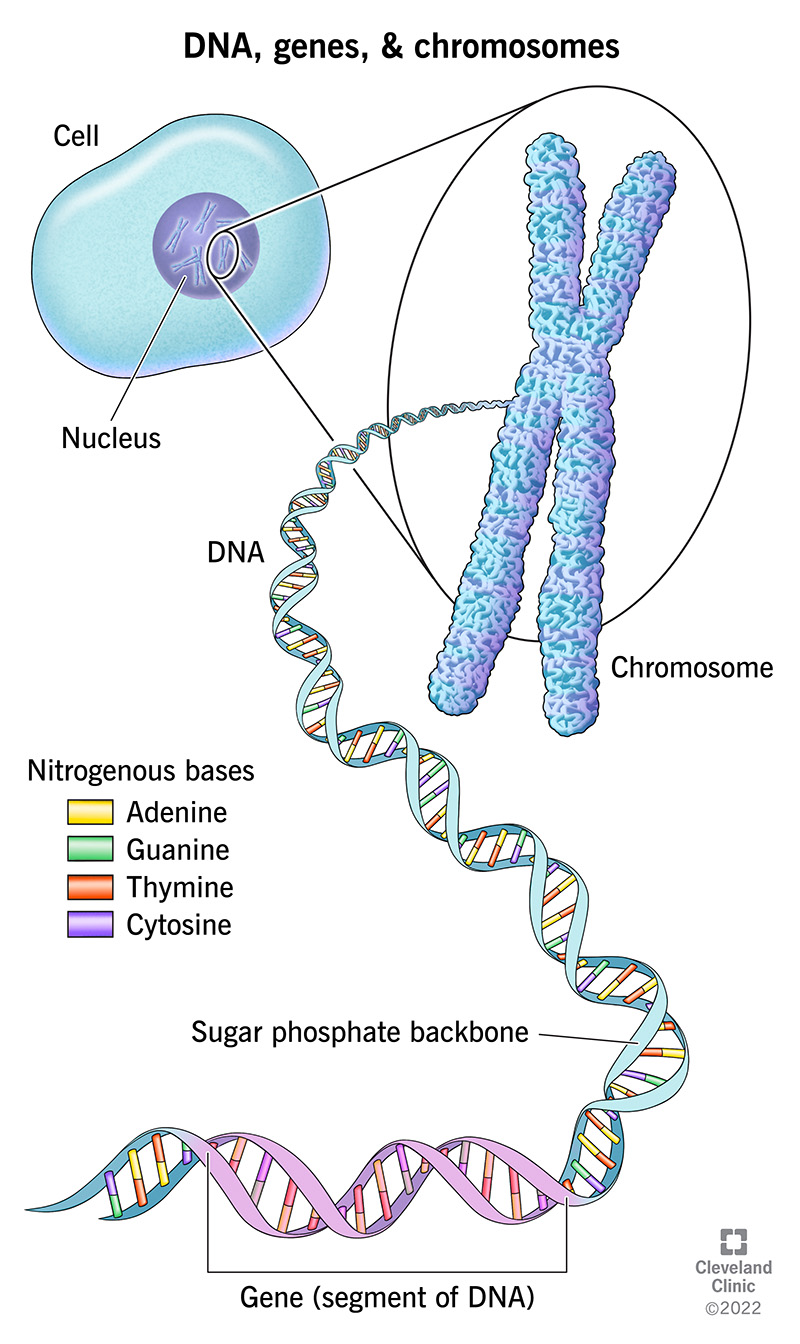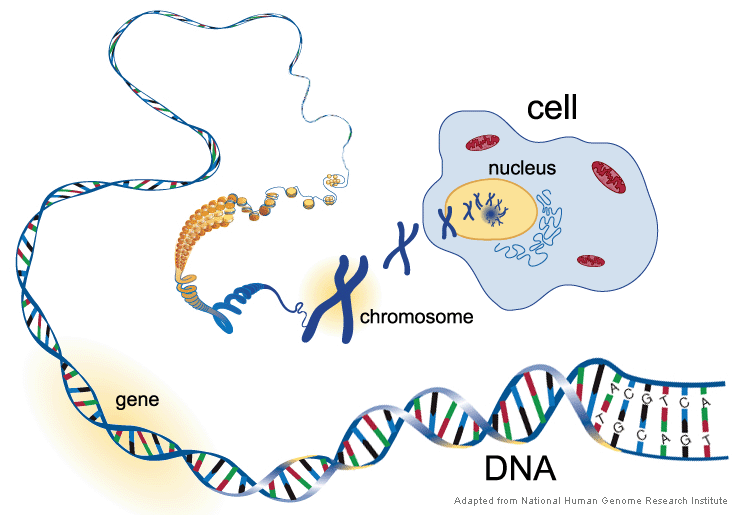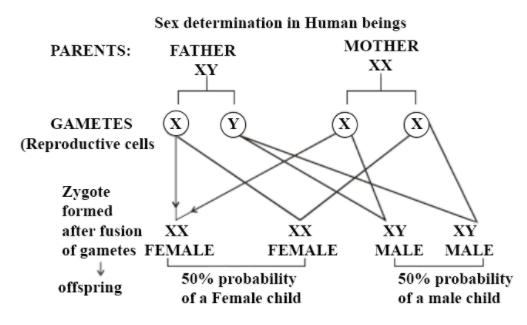Chromosome
Subject: Science

Overview
Chromosomes, tiny fibers inside plant and animal cells, are made up of DNA and histone proteins and contain millions of genes. Genes represent unique personality traits and play a role in inheritance and evolution. Chromosomes can be divided into sex and somatic chromosomes, with somatic chromosomes controlling physical traits and sex chromosomes providing sexual orientation. The number of chromosomes varies between species, with humans having 23 pairs per cell. Sex determination in humans involves separating male and female sexes based on genes found in each individual's sex chromosome. Human body cells have 23 pairs of chromosomes, with a 50% chance of fertilization ending in a son or daughter.
Have you ever thought?
- Where in the body are chromosomes located?
- What components make up a chromosome?
- What function do genes serve in the body of a living thing?
- Do all organisms have chromosomes?
Under a strong microscope, we can detect a network of tiny fibers inside the nucleus of both plant and animal cells. We refer to these fibers as chromatin fibers. These fibers, which are referred to as chromosomes, become shorter, thicker, and more noticeable during cell division. DNA and histone proteins make up each chromosome, and each chromosome contains many genes. Every gene is a representation of a unique personality trait. A gene is a little segment of DNA located within a chromosome. The centromere and chromatid are the two primary components of a chromosome. The two arms of a chromosome are called chromatids. The identical copies of a duplicated chromosome are called sister chromatids. The centromere is the chromosomal structure that resembles a knot and connects two chromatids.
Gene
A gene is the smallest segment of DNA within a chromosome that codes for a particular trait in an organism. A chromosome has millions of genes in it. Genes have a role in the inheritance of traits from parents to children. Through mechanisms like genetic recombination and mutation, genes also contribute to evolution.
Types of Chromosomes
Based on how they work, chromosomes may be divided into two categories. These are sex chromosomes and somatic chromosomes, sometimes known as autosomes.
- Somatic Chromosomes
Somatic chromosomes are the types of chromosomes that control an individual's physical traits. Every member of a pair of somatic chromosomes has the same morphology. Thus, autosomes are another name for these chromosomes.
- Sex Chromosomes
Sex chromosomes are the chromosomes that provide sexual orientation to an individual. A pair of sex chromosomes has distinct structural differences in each member. That's why these chromosomes are known as heterosomes.
Number of Chromosomes
A given organism always has the same number of chromosomes. Still, the number of chromosomes differs. between different species. For instance, each cell in a gorilla's body contains 48 chromosomes, compared to 46 in humans. In most cases, the number of chromosomes is given in pairs. Humans, for instance, have 23 pairs of chromosomes per cell. The reason it is mentioned in this manner is that, of the 23 pairs, one set of 23 chromosomes is attributed to the father, while the other set is attributed to the mother.
A somatic cell that has two sets of chromosomes is referred to as a diploid (2n). A gamete known as a haploid (n) has one pair of chromosomes. For instance, a human somatic cell is diploid and has 46 (2x23) chromosomes. Human gametes are haploid and comprise 23 (1x23) chromosomes, whether they are sperm or ovum.
Role of Sex Chromosomes in the Determination of Sex in Humans
The genes found in their chromosomes determine the traits of living things. Similarly, "sex determination" refers to the process of separating the male and female sexes based on the genes found in each individual's sex chromosome. The sex of the foetus is determined by its sex chromosome.
Human body cells have a total of 23 pairs of chromosomes. One pair is a single chromosome or heterosome, while the other twenty-two are autosomes. A male individual's cell has one set of XY sex chromosomes, while a female individual's cell has XX sex chromosomes. Male and female germ cells (located in the testes and ovaries) divide meiotically during the reproductive phase, making haploid gametes (n = 23) and diploid cells (2n = 2×23). The testis, the male reproductive organ, has 44 +XY chromosomes in its mother cell. Meiosis is the process by which this cell divides to produce sperm with either 22 + X or 22 + Y chromosomes. Similar to this, 44 + XX chromosomes make up the mother cell of the ovary, the female reproductive organ. Additionally, this cell divides via meiosis to produce an ovum with just 22 + X chromosomes. When a sperm with 22 + X chromosomes fuses with an ovum with 22 + X chromosomes during copulation, the resulting child will be a girl or daughter (44 + XX). In a similar vein, a boy or son (44 + XX) will be born if a sperm with 22 + Y chromosomes unites with an ovum with 22 + X chromosomes. Given that 50% of male sperm contain X chromosomes and 50% have Y chromosomes, there is a 50% chance of fertilization ending in a son or daughter.
Things to remember
- Chromosomes, tiny fibers inside the nucleus of plant and animal cells, are made up of DNA and histone proteins.
- Chromosomes can be divided into two categories: sex chromosomes and somatic chromosomes, also known as autosomes.
- The number of chromosomes varies between species, with humans having 23 pairs per cell.
- Human body cells have 23 pairs of chromosomes, with one pair being a single chromosome or heterosome and the other twenty-two being autosomes.
- Sex determination in humans involves separating male and female sexes based on the genes found in each individual's sex chromosome.
© 2021 Saralmind. All Rights Reserved.




 Login with google
Login with google